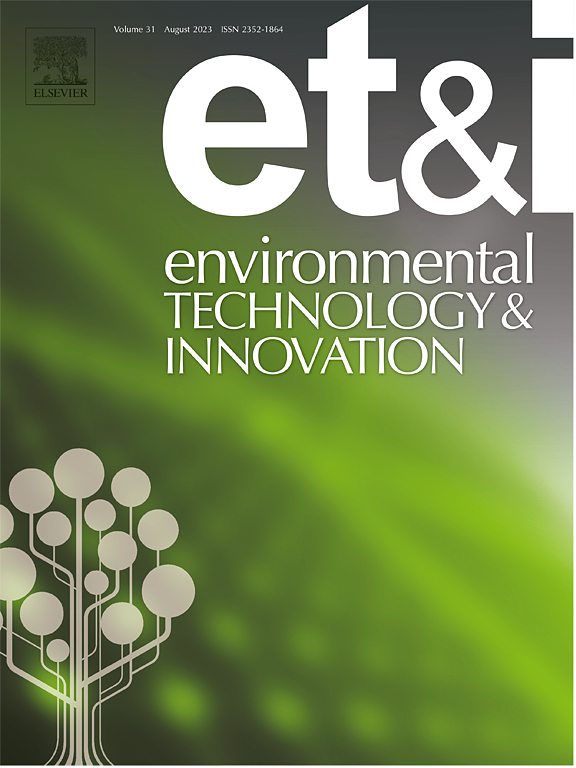Simultaneous nutrition removal and high-efficiency biomass accumulation by microalgae using cattle wastewater
IF 6.7
2区 环境科学与生态学
Q1 BIOTECHNOLOGY & APPLIED MICROBIOLOGY
引用次数: 0
Abstract
The development of the livestock industry has led to the discharge of large quantities of nutrient-rich livestock wastewater, posing a significant challenge to wastewater treatment. Improper treatment may pose potential threats to the environment and human health. Microalgae are of great interest due to their rich nutritional value and as potential agents for bioremediation of pollution in aquatic environments. In this study, mixture of 60 % cattle wastewater (CW) and 40 % BG-11, supplemented with equal parts glucose and sodium bicarbonate, was found to be optimal for high production of Chlorella sorokiniana. Under these conditions, the highest biomass, protein, lipid concentration of C. sorokiniana were 8.98×1010 cells/L, 11.82 g/L, 24.9 %, respectively, Whereas, the removal efficiencies of total nitrogen (TN), ammonia nitrogen, total phosphorus (TP), and chemical oxygen demand (COD) were 61.44 %, 98.99 %, 89.33 % and 65.81 %, respectively. These findings highlight the potential of C. sorokiniana in simultaneous CW treatment and nutritious microalgal biomass production.
微藻利用养牛废水同时去除营养和高效积累生物量
畜牧业的发展导致大量富含营养物质的畜牧废水排放,给废水处理带来了巨大挑战。处理不当可能会对环境和人类健康造成潜在威胁。微藻因其丰富的营养价值和对水生环境污染进行生物修复的潜在作用而备受关注。本研究发现,60% 的牛废水(CW)和 40% 的 BG-11 混合物,再辅以等量的葡萄糖和碳酸氢钠,最适于高产苏氏小球藻。在这些条件下,小球藻的最高生物量、蛋白质和脂质浓度分别为 8.98×1010 cells/L、11.82 g/L、24.9 %,而总氮(TN)、氨氮、总磷(TP)和化学需氧量(COD)的去除率分别为 61.44 %、98.99 %、89.33 % 和 65.81 %。这些发现凸显了 C. sorokiniana 在同时处理化武和生产营养微藻生物量方面的潜力。
本文章由计算机程序翻译,如有差异,请以英文原文为准。
求助全文
约1分钟内获得全文
求助全文
来源期刊

Environmental Technology & Innovation
Environmental Science-General Environmental Science
CiteScore
14.00
自引率
4.20%
发文量
435
审稿时长
74 days
期刊介绍:
Environmental Technology & Innovation adopts a challenge-oriented approach to solutions by integrating natural sciences to promote a sustainable future. The journal aims to foster the creation and development of innovative products, technologies, and ideas that enhance the environment, with impacts across soil, air, water, and food in rural and urban areas.
As a platform for disseminating scientific evidence for environmental protection and sustainable development, the journal emphasizes fundamental science, methodologies, tools, techniques, and policy considerations. It emphasizes the importance of science and technology in environmental benefits, including smarter, cleaner technologies for environmental protection, more efficient resource processing methods, and the evidence supporting their effectiveness.
 求助内容:
求助内容: 应助结果提醒方式:
应助结果提醒方式:


